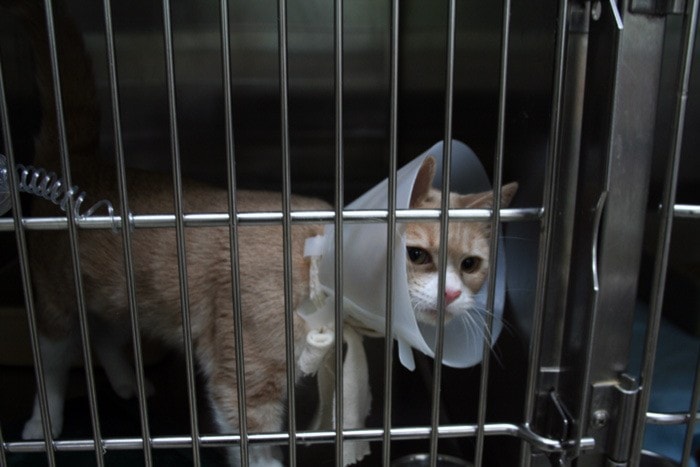The Prince Rupert SPCA wants the city to put up some money for a spay and neuter program that aims to get the area’s booming stray and feral cat population under control.
The SPCA’s new branch manager, Anna Terebka, is currently applying for a grant that will give her $7,500 if she can match it with donations from the community. While Terebka says she is also looking for private donations, she asked the council to promise to make up the difference.
“What I’m going to do is accept applications from the public, implement the spaying an neutering and the return the feral and free-roaming cats back to the people who are caring for them. There are lots of feeding stations around town where people feed cats,” says Terebka.
“If I can just catch these animals, spay and neuter them, give them back [the people feeding them] can continue caring for them but the population won’t increase and eventually it will decrease.”
Terebka says she has a verbal agreement with the veterinarian for a discount on the operations, which will average about $100 per cat. That means the SPCA with the full grant could fix around 150 cats.
Part of the program will also be getting a better idea of just how big the feral and free-roaming cat population is in the area. Terebka has a background in measuring wildlife populations and plans to use the same principles on the cats. Having a clear picture of how big the population is will allow them tell if program is worked.
“I’ll be adapting sampling procedures to a community, and lots of my university friends are helping me with that. But if we (sample the population) again in a year and we find fewer numbers, we’ll know that the program is working,” says Terebka.
It’s kitten season and the SPCA is currently dealing with huge influx of young cats, almost all of which are sick. The SPCA is currently under quarantine due to an outbreak of ringworm. A big part of the problem, says Terebka, is the out of control cat population.
“We need to get the cat population under control. One cat at six-months-old can have three litters a year. I don’t want to say it like this, but they breed like rats, it’s crazy. We need to put a net over this population crisis,” says Terebka.
The subject of the Prince Rupert areas cat problem has been mentioned in council a couple times but the City has done little about it, as it inevitably ends up taking a back seat to other issues. On top of that, the City has drastically cut back on its funding to the Prince Rupert SPCA in recent years to save money.
Councilors said they appreciated Terebka coming in, but the skepticism of her plan was palatable. This is a city council that is criticized often for raising taxes and in response has clamped down on spending outside of their own operations – going as far as risking the loss of popular the Sugar Shack Festival to save $500.
So wasn’t surprising when councilors questioned whether the program was work spending potentially thousands of taxpayer money on it.
“We could get these cats spayed and neutered, put them back, then they get eaten by wolves and that would be a waste of money. I’m an animal lover, and I’m not being impertinent, but it would take more [fixing 150 cats] to get this problem straightened out. In my area along we have more than that. It’s the people that have to learn,” said Councilor Nelson Kinney.
The Prince Rupert feral cat population is also in the midst of an epidemic of feline leukemia and feline infectious peritonitis, both of which are transmittable among cats. Some councilors asked Terebka if mass euthanasia would be better for the health of the population but also more cost effective than fixing them and releasing them.
“I think that euthanasia is an option that is affordable . . . I also don’t see how spaying and neutering is going to help with [the disease] problem, I still need more convincing,” says Councilor Gina Garon.
Terebaka said she didn’t know if euthanasia would cost less that fixing the cats, but said that the option was one that the SPCA wanted to avoid because it would be emotionally difficult on the employees, not to mention a public relations nightmare waiting to happen.
Council has yet to make a decision on the SPCA’s request for financial support for its grant application.
